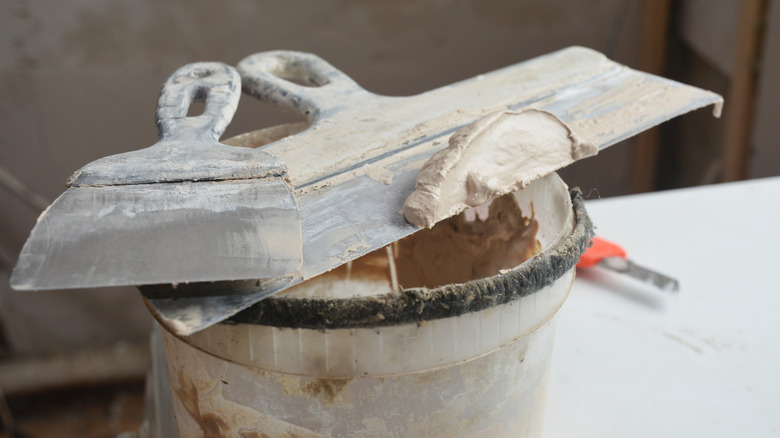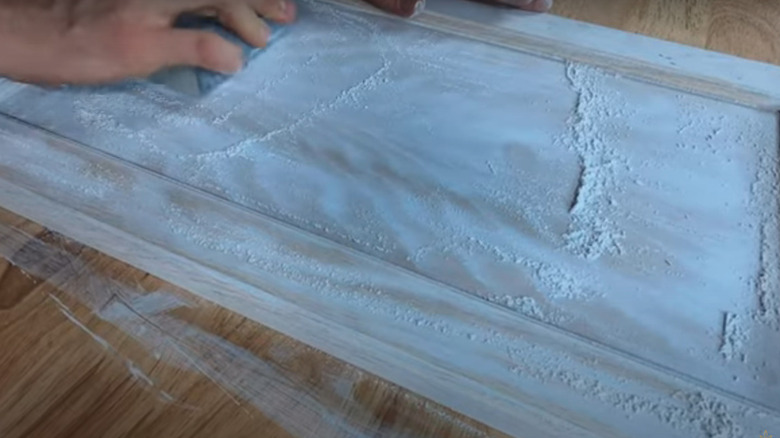Is Using Drywall Mud Instead Of Grain Filler A Good Idea For Wood Cabinets?
If you want your wood cabinets to have a nice, smooth surface, you need to apply a wood filler before painting them. Filling wood is especially important for open-grain woods with large pores, such as oak and ash. While you can paint and install new cabinets yourself, there are several things you'll need to do to get them right. By applying grain filler before priming and painting your cabinets, you'll give them extra shine and ensure they're smooth. While a grain filler made specifically for filling wood can work well, there's a great alternative. Drywall mud is an excellent alternative to grain filler that works better than you might expect. It can serve you well when prepping your kitchen cabinets before painting.
Drywall compound works great because it's affordable, sanding it is easy, and it can be used for multiple purposes. You'll be able to fill and patch drywall with it as well. Drywall mud works well for all rough-grain wood surfaces, but it's a particularly good choice for plywood, oriented strand board (OSB), and oak. One quart of grain filler such as Aqua Coat will cost approximately $45, and a much larger container of drywall mud will cost around $25 or even less; it's a great option if you're on a budget. Fortunately, drywall mud can lead to great results. However, you'll need to choose which to use carefully. Bagged drywall mud with a quick dry time is ideal if you want to experience minimal headaches.
How to apply drywall mud to a wood cabinet
Applying drywall mud to a cabinet is similar to applying grain filler and will take effort. First, you'll need to clean the surface of the cabinets thoroughly. However, there's no need to sand now since you'll do so later. Before applying it, mix the drywall compound with water inside a mud pan or bucket. Be careful not to dilute it too much. If you do, it won't work as effectively. Once your drywall mud is ready, grab a plastic taping knife and apply a thin coat to your cabinet. You can then apply the mixture to door edges and crown molding using your finger. If there's any drywall mud excess, you can remove it with the help of a putty knife, a damp rag, or a similar tool.
Don't forget that you should avoid painting cabinets without sanding them first. Once you've applied the drywall mud, sand every inch of the wood cabinet. An orbital sander works well for this purpose, but you can use another type if necessary. Be sure to sand with the grain since this will reduce the chances of scratch marks. After applying the primer to a cabinet, you'll want to check it thoroughly to look for spots that weren't filled successfully. You can then spot-patch the cabinet with drywall mud before applying a second coat of primer to the cabinets.

